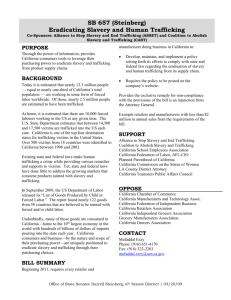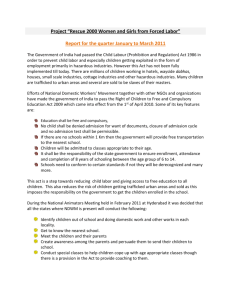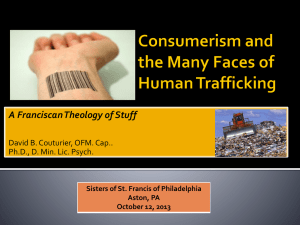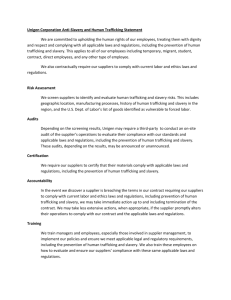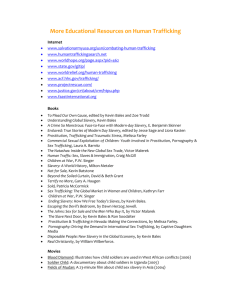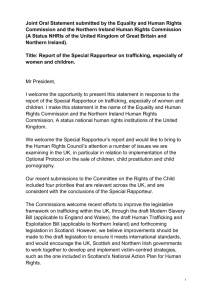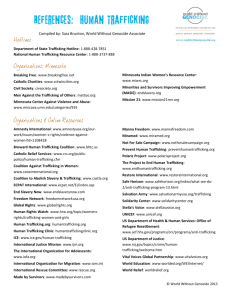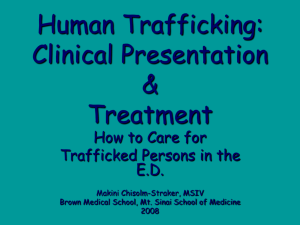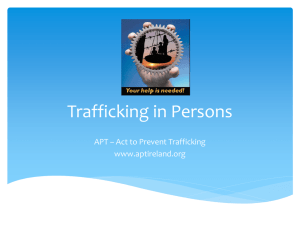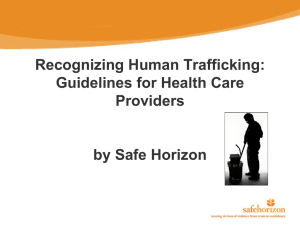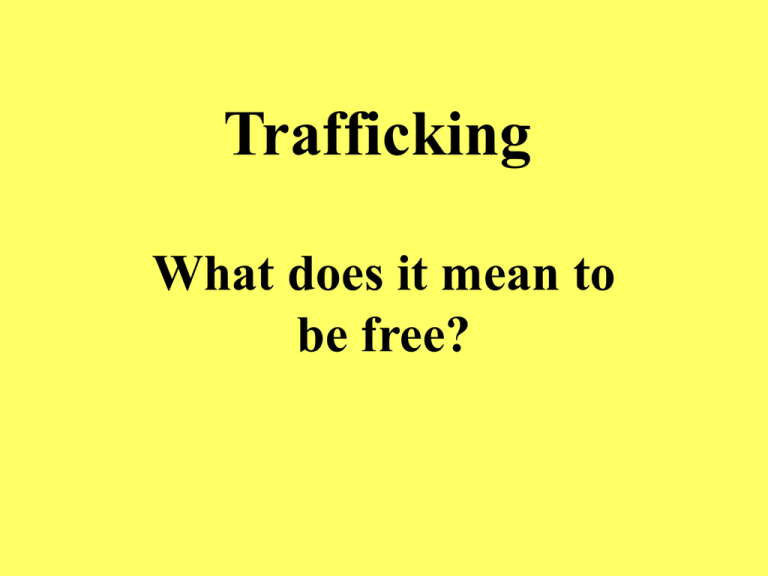
Trafficking
What does it mean to
be free?
Walt
Wilf
A knowledge and understanding of a
range of issues identifying people in
enslavement today
An insight into real life cases and how
their lives reflect slavery
An empathy with some issues of
enslavement today
An appreciation of hoe issues of
enslavement contravene the universal
declaration of Human Rights
To develop reasoned opinion and attitude
in relation to a variety of issues of enslavement
today
An appreciation of life in
enslavement
Reflection on how slavery
contradicts human rights
Reasoned opinions on a variety of
issues
Awareness of how slavery exists
http://www.stopthetraffik.org/reso
urces/film_sttviral.aspx
Need to choose the windows media
film to play video clip
Would you accept this
type of package?
Trafficking involves transporting
people away from the communities in
which they live, by the threat or use of
violence, deception, or coercion so they
can be exploited as forced or enslaved
workers for sex or labour.
When children are trafficked, no
violence, deception or coercion needs
to be involved, it is merely the act of
transporting them into exploitative
work which constitutes trafficking.
The United Nations estimates that 1.5
million children under 16 are
trafficked worldwide each year.
Children from Eastern Europe are put
to work in Germany, Italy, Britain and
Austria.
Hundreds of children, some as young
as six, are also brought into Britain
from Africa and the Far East
Organised gangs carry out the trafficking.
Some of the children are kidnapped but
some are given over willingly by their
parents who think their children are going
to have a better life in Western Europe
The children work as ‘slave labour’ in
people’s homes as domestic servants, in
clothing sweatshops, cannabis factories or
as prostitutes. They work for little or no
reward, often live in terrible conditions and
are abused physically and sexually. In 2004,
charities found children in 32 London
boroughs whom they suspected had been
trafficked
Should people be
bought and sold?

